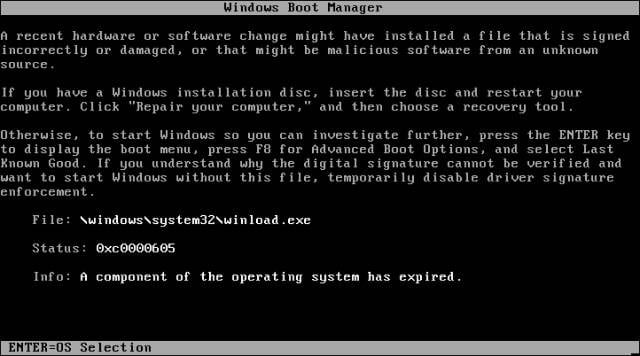
:max_bytes(150000):strip_icc()/windows-boot-manager-5a2ae361e258f80036c1ecb9.png)

The next step is the same across all the operating systems at this point :įirst run the command below to backup the old BCD : ren BCD BCD.old Select Command Prompt from the Recovery Options : Select Repair your computer from the menu that appears. Tap rapidly on the key once the PC has turned on, but before the Windows Splash Screen appears.


If you don't have the Installation Media : Type and run the command : bootrec /FixBoot Type and run the command : cd /d :\EFI\Microsoft\Boot\ Type and run the command : assign letter=: Verify that the EFI partition (EPS - EFI System Partition) is using the FAT32 file system and assign a drive letter to it (Assign a letter that isn't already in use.): Select the operating system and click next. Insert the Media (DVD/USB) in your PC and restart. However Windows 8, 8.1 and 10 were designed to install on the UEFI BIOS using the EFI bootloader and GPT. Windows 7, 8 and 8.1 could install on a Legacy BIOS using MBR. Note: Replace any with the appropriate values found on your machine, do not keep the This will only work for those OSs installed on a UEFI (Unified Extensible Firmware Interface) BIOS (Basic Input / Output System). This particular article deals with running a repair of the EFI (Extensible Firmware Interface) bootloader on a GPT (GUID (Globally Unique Identifiers) Partition Table) Hard Disk Drive. Most people with boot issues on Windows Operating Systems (OS) will choose to reinstall the OS rather than attempt to fix the boot issue itself. What to do if you are still unable to boot into Windows.How to repair your MBR (Master Boot Record) - Legacy Machines.This article provides information about how to resolve an issue with the EFI Bootloader not booting correctly on a GPT Hard Disk Drive for a number of Windows Operating Systems.


 0 kommentar(er)
0 kommentar(er)
